Text


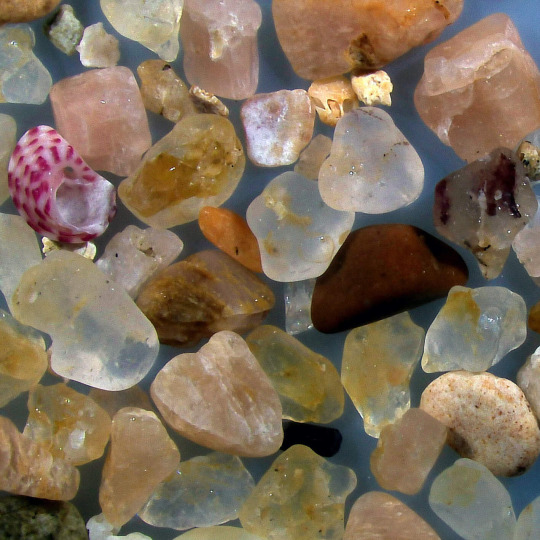
Soil Science Fact of the Day
There is enough phosphorous in a single grain of sand to feed an entire acre of plants, its just not in a soluble form. What in nature solubilizes it? Microbes! Isn't that cool? This is why its essential not to kill your soil life with chemicals. Everything a plant needs is in the soil already (no matter how crappy it seems) and as long as you create a flourishing microbiome, your plants can uptake it.
The number one thing you can do to create a lovely microbiome? This is my fave answer ever...NOTHING. Stop doing all the work you think you have to. You're currently doing the jobs of the microbes that have been killed off and lets be honest, we humans are about as good a replacement for microbes in soil as the planet Jupiter would be as a speed bump. You can stop fertilizing, spraying and tilling. It's the job of microbes to fertilize and protect the plants from diseases. Its the job of roots to till. You know what your job is? To relax on the sofa with a beer. It's time for us to stop trying to be microbes and just be humans.
Personally, I think it's not a bad deal. 😆
#healthy soil#soil#gardening#farmtotable#sand#science is neat#soil science#backyard#fun facts#beginner gardener#how to garden#garden tips#i love science#microbes#soil life#soil food web#do nothing#be lazy#mother nature#natureislife#nature
14 notes
·
View notes
Text

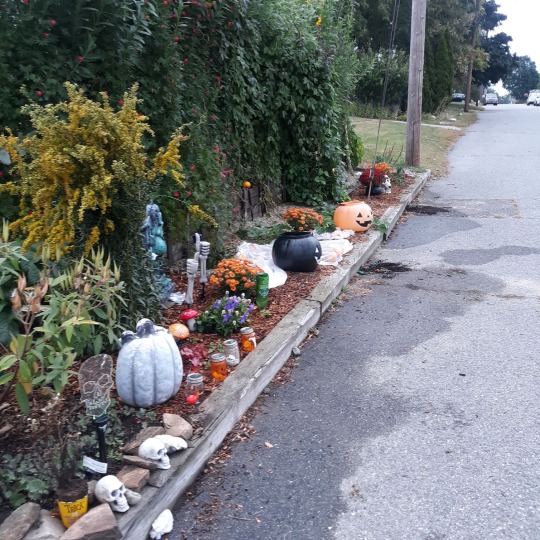

Got our garden all decked out for halloween!
#garden#gardening#halloween#all hallows eve#holidays#skeleton#decorations#front yards#fall2021#haloween2021#permaculture#naturalfarming#microfarm#suburban garden#flowers
3 notes
·
View notes
Text
Would have actually done a thing if she had worn a dress saying Grow Your Own Food.
I agree with the message but?! this is tone deaf coming from one of the elitist, most prestigious fashion events in the world. you are rich to even be invited, an event where the ticket is literally $30,000.... I’m gonna eat YOU



#grow your own#permaculture#farmtotable#insteading#self sufficiency#gardening#plants change the world#naturalfarming#suburban garden#everyone can grow food
125K notes
·
View notes
Text
Have you ever just sat and looked at white clover? It’s mostly looked upon as a weed, a pest, something in the way. But if you dismiss that kind of thinking and just look at it, it’s so beautiful. You can also eat white cover. Did you know that? The leaves and flowers are edible. It’s also a medicine. This plant we see as “in the way”. It has so much benefit.
Also, clover pumps nitrogen from the air into the soil and so if you grow some in your lawn, it will consistently fertilize and feed your very hungry grass. Amazing companion plant for lawns or even just a patch of ornamental grass. Oh and not to be forgotten, it feeds pollinators and supports beneficial insect life.
I have an idea. Let’s stop calling it a weed!

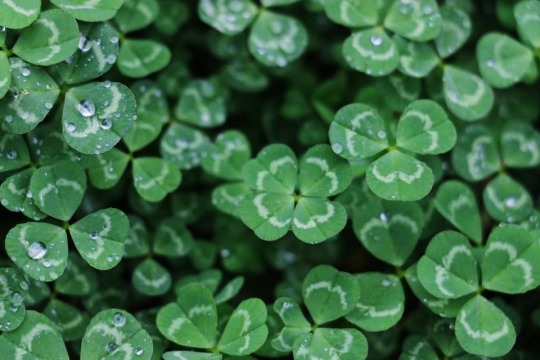

330 notes
·
View notes
Photo

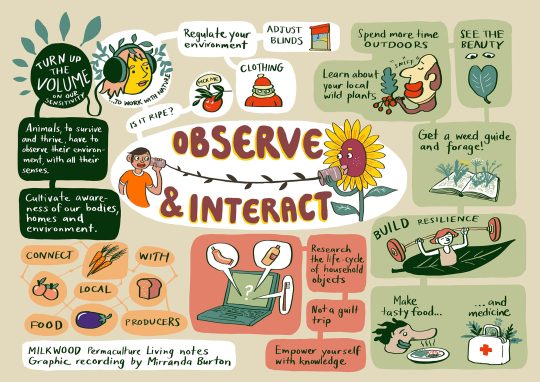

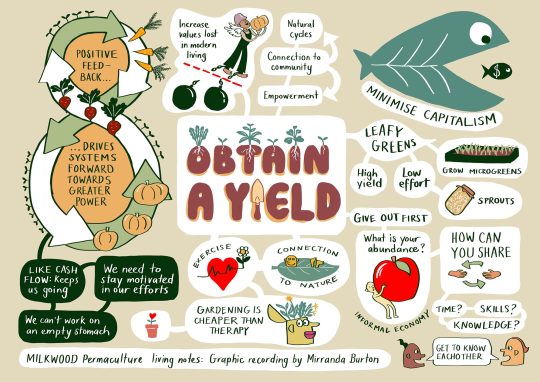

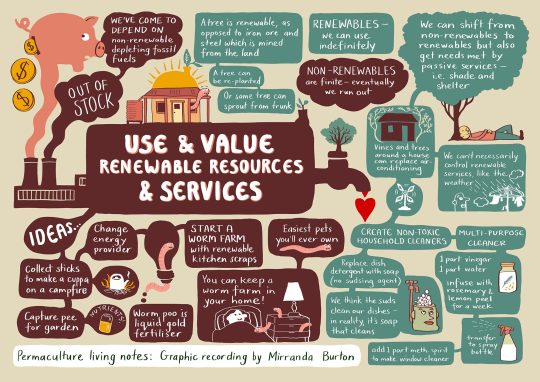






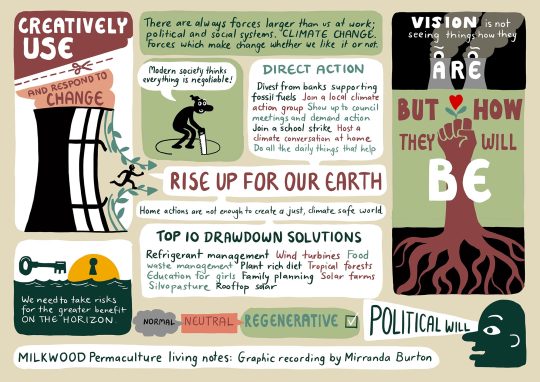
What is Permaculture & The 12 Principles of Permaculture
Graphics by Mirranda Burton, Information from Milkwood’s Online Permaculture Living Course
4K notes
·
View notes
Text
Delphiniums just came into bloom yesterday! They are not edible in any way. In fact, they even purpotedly kill Japanese Beetles which think theyre delicious. This year we have two more plants than last year. One of the self seeded ones is the same color and one seems to be white. Excited for the delphimium patch to grow bigger and more diverse each year.
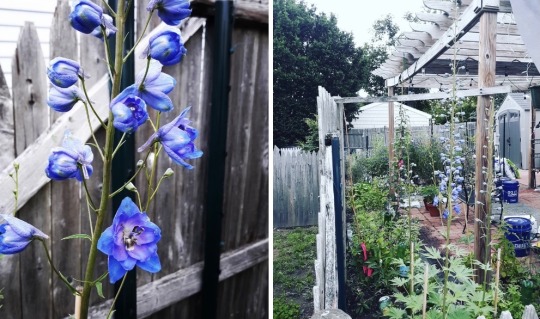
#delphinium#flowers#gardening#naturalfarming#permaculture#garden#insteading#farmtotable#microfarm#summer 2021#plants#self seeding#organic pest control#pest control#japanese beetle#beautiful#yard#backyard#suburban garden#patio#flower bed
3 notes
·
View notes
Text
This is actually a note to myself but also good info for anyone who grows fruit on trees!
How to Prune Fruit Trees
Pruning trees at the right time can help ensure a bigger and better fruit harvest, easier to access fruit, and healthier trees, making you more resilient.
What is pruning and why do we do it?
Pruning is when we remove unwanted plant material in order to allow the tree to produce fruit in a way that's healthy for the tree and accessible to harvest.
Wild trees are still able to produce vast quantities of fruit and flowers, but pruning is done to achieve one or more of the following:
Keep the tree small and highly productive.
Increase fruit size, yield, and accessibility.
Improve structural strength of tree limbs to better support fruit.
Removed diseased or damaged parts.
Remove branches that cross each other and cause congestion.
Increase light and airflow to prevent fungal diseases related to excess humidity.
Maintain soft green stems which are useful for propagation.
Remove a 'leader' (apical bud, tallest upright stem) to encourage the tree to grow outwards (lateral growth).
Commercial orchards often prune trees to make wide open canopies and make chemical spraying easier. In a permaculture setting, it's best to shape trees to reflect your climate and fruit harvest needs.
Should I prune in summer or winter?
Stone fruits (plums, cherries, peaches, apricots) are best pruned in summer. These trees are susceptible to a disease called Cytospora canker, a fungal disease that attacks pruning cuts made in cold weather. Pruning in summer lets the cuts heal before winter.
Pome fruits (apples, pears, quince) are generally pruned when plants are dormant in winter. Pruning in winter when the trees have finished growing and are dormant will produce lush new growth in spring.
All trees can be pruned in summer, but pruning an actively growing tree will limit its growth. If you're trying to reduce the size of a tree, summer pruning may be best.
A Tree's Growing Features
Understanding your tree's morphology will help you make informed cuts when pruning.
Leaders: the longesy, strongest branches - or the longest, strongest branch in the center of the tree.
Laterals: any branch growing away from the central leader or leaders. This is where most fruit is formed.
Sublaterals: a stem growing from a lateral
Choose which stem/stems will become your leaders. Base this choice on your space and what you plan to do with the tree, as well as the climate. In dry, hot areas, you may not want a wide open fruit tree that lets lots of sunlight in. In a humid environment you may want to open up the trees to reduce moisture and fungal disease.
Identify Fruit Tree Buds and Fruiting Spurs
First, determine if your fruit is spur-bearing or tip-bearing. Spur-bearers produce trees with lots of spurs on wood that's two years or older. Tip-bearers produce fruit in clusters near or at the tip and produce very fear fruiting spurs. If you're purchasing a new tree, ask which type it is.
The size and shape of buds will help you decide where to cut when pruning. Examine the bud and determine if it's a:
Shooting bud: a thin, flattish bud that will produce leaves and a stem
Fat fruit bud: looks fatter and founder and sometimes more fluffy than a shooting bud and will produce a flower and therefore fruit if pollinated
Fruiting spur (also known as a spur-bearer): a short, stocky shoot close to the leaders, that produces fruit and is spaced very closely to the next shoot. Fruiting spurs occur on apples, pears, cherries, pomegranates, and plums.
For more fruit, try not to prune too many fat fruit buds or fruiting spurs.
Will my trees still produce fruit even if I don't prune them?
YES! Just like wild trees your trees will continue to produce fruit, pruned or not. Pruning every year makes harvesting easier long term.
How to tell if a tree is older than two years old?
Every season a tree puts on new growth and then stops. At the spot where growth stopped the tree develops a terminal bud and a bulging line. Run your hand along the central leader up and up until you can feel a raised textured surface circling the stem, each time you find a bulge like this it represents a year of growth.
Why do I need to know the age of a fruit tree?
Fruit trees start producing fruit in their second or third year (if a dwarf variety) or any time after those first few years. They don't produce fruit in the first year and some only produce fruit on new-season growth. Knowing this helps you prune in an informed way.
Pruning Branch by Branch:
Pruning dead/damaged branches: if a branch is still alive it will be very easy to scratch the surface and the scratch will reveal a distinctly green layer underneath. If a branch is dead the surface will be harder to scratch and you will not see that lush green layer. If this is the case, cut that stem right back at a slight angle. Treat a broken branch the same way.
Pruning low-growing branches: pruning these (lower than 1 meter) branches allows easier access to the tree. If you live in a landscape where rabbits are a problem you may want to leave your low-growing branches so the rabbits don't chew the bark on your central leader.
Pruning fruit tree suckers: most fruit trees are grafted, with fruiting trees grafted to the top of a rootstock that's known to grow vigorous and strong. Even with successful grafts shoots can be sent up from the rootstock, these are called suckers. Cut these suckers off to prevent them taking nutrients away from the rest of the tree.
Source: Milkwood.net
More Resources on Pruning:
Years to Fruit, how long different fruit trees take to offer fruit
How to Prune Stone Fruit Trees in Summer, video
Tips for Winter Pruning, video
Pruning Fruit Trees: Shoot Structure and Growth, video
390 notes
·
View notes
Text
This year we don't have clover in the front bc we had to cover it when we landscaped. Guess what? While last year the rabbits didn't eat our garden bc they only had eyes for the clover, this year they are eating our garden sprouts. Bc there's no clover. So thats another benefit of clover.
Luckily, we are just now ready to seed our new clover lawn. Hold on bunnies! Your buffet is almost ready!
Have you ever just sat and looked at white clover? It's mostly looked upon as a weed, a pest, something in the way. But if you dismiss that kind of thinking and just look at it, it's so beautiful. You can also eat white cover. Did you know that? The leaves and flowers are edible. It's also a medicine. This plant we see as "in the way". It has so much benefit.
Also, clover pumps nitrogen from the air into the soil and so if you grow some in your lawn, it will consistently fertilize and feed your very hungry grass. Amazing companion plant for lawns or even just a patch of ornamental grass. Oh and not to be forgotten, it feeds pollinators and supports beneficial insect life.
I have an idea. Let's stop calling it a weed!



330 notes
·
View notes
Text
Food and healthcare sovereignty is entirely possible.

Many of the very people complaining about how expensive food and healthcare is are also people who pay to have poison poured on their dandelions multiple times a year. Dandelions are both food and medicine.
It's time to shift our thinking.
47 notes
·
View notes
Text

Our first significant pea harvest! Although this isn't all of it. We split it and made a snack pack for B for lunch tomorrow. It's a mix of King Tut Purple, Sugar Ann and Sugar Snap. The Sugars are of course sweet when eaten whole. The King Tuts are tender and mild when very young, otherwise it's good to let them mature and eat them as shelled peas, which burst open with incredible sweetness.
I love peas so much. Theyre so easy to plant as the seeds are large and very forgiving about depth. Then all you do is water and a month later....bam...delicious sweetness for your mouth!
#gardening#naturalfarming#permaculture#garden#insteading#farmtotable#microfarm#suburban garden#plants#plantdad#early peas#snap peas#peas#sugar snap peas#food#healthy food#early harvest#hearvest#yum
2 notes
·
View notes
Text
Someone asked what exactly is the inoculant. It is bacteria that belongs to the genus Rhizobia. Different legumes have relationships with different bacterias in the rhizobia genus. Sort of. Theres overlap, bc of course, bc nature. Generally this bacteria exists everywhere in nature and in undisturbed nature the symbioses simply occurs, but we have disturbed nature to such a thorough degree in human developed areas that we need to add the bacteria when we grow, at least in the beginning. Factory farmers add it every time because they need to produce such inhumanly enormous yields, but home gardeners probably only need to do it once.
When you buy inoculant, you don't really have to worry about which bacteria you need. They sell bags of inoculant that work for a variety of legumes that are all listed on the bag.
But now you know the general info. Happy inoculating!

Inoculating pea and clover to sow in front strip of the yard! What is inoculation and why? Inoculation is covering legume seeds in certain bacteria bc all legumes fix nitrogen through the colonization of those bacteria with their roots. Nitrogen is the main food plants eat so sowing legumes with nitrogen feeders fertilizes them naturally!
37 notes
·
View notes
Text
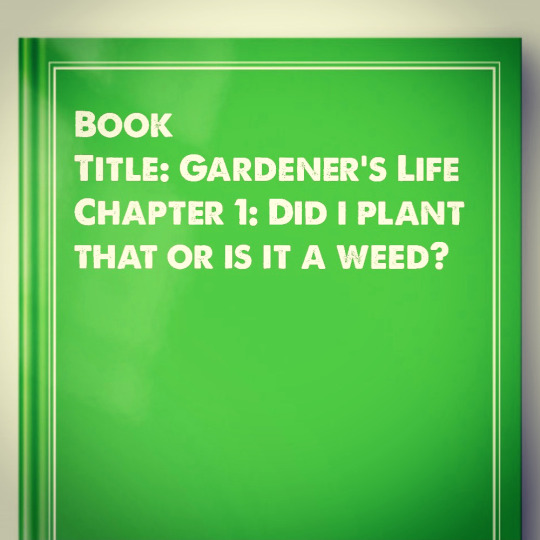
The outline for my gardening book is practically writing itself...😆
7 notes
·
View notes
Text
Great info! Caveat with rye is working it in come spring doesn't tend to stop it from coming back and interfering with your warm season food crops. Farmers who use it have found themselves having to use herbicides to kill it. If that sounds like what you don't want, use a winter killing crop, then just chop and drop it right before it flowers, unless you live in a ridiculously windy area like me in which case just step on it before it dies until it's all flat and then the roots will keep it from blowing away. If you flatten it after it dies and dries it might break and blow away.
So far we have used clover, daikon, sunflowers, amaranth, buckwheat, and flax this way and it works wonders.
Green Manuring
Green manuring is the process of growing a crop and adding it to the soil by digging/plowing in or cutting/pulling the crop and dropping it on top. Over time the green matter will rot and worms will drag it into the soil. This improves the quality if your soil by rotting into humus, preventing soil erosion, and retaining nitrogen instead of losing it to the air like bare soil would.
Using Weeds: Annual weeds can be a green manure crop. Many annual weeds pop up after your crops have been harvested. Let them grow and chop them tight to the ground before they seed. All green manure crops should be cut or pulled at the flowering stage or earlier, when they're young and full of protein. This way they'll have enough nitrogen in them to provide for their own rotting down.
Planting Green Manure: Green manure crops can be divided into winter and summer crops, and legumes & non-legumes. Legumes make the best green manure crops because they have bacteria at their roots that take nitrogen from the air, which is added to the soil when they rot.
Grazing Rye: A wonderful winter green manuring crop. Plant it after your harvest, rake the seed in, let it grow all winter, and then dig it in during spring.
Comfrey: A great summer green manuring crop. Plant root cuttings 2 feet apart on weed-free land in the spring and let it grow. Comfrey's deep roots will give heavy yields of nitrogen rich material, phosphate, and other minerals to the soil.
Other great green manuring crops: beans & peas, clovers, lupins, vetch, alfalfa, soybeans, sunflowers, oats, buckwheat.
Seymour, John. The New Complete Book of Self-Sufficiency. DK Publishing, 2019.
279 notes
·
View notes
Text

Camassia quamash also known as Small Camas, is a native to western America flowering bulb in the same family as agave, asparagus, hosta and yucca and has edible tubers. For over a hundred years the trend has been to buy exotic plants for your yard because they're more beautiful or interesting. So untrue! Look at this thing! Its amazing.
The native Americans propagated these as an important food source and it has special value to native pollinators. It naturalizes just like muscari, which shares the same plant family.
The tubers are said to be similar to sweet potato but sweeter. You can roast them for eating, boil them to make a syrup or grind them to make flour that can be used for baking or as a thickener.
We wont be able to eat any for a few years while they're getting established and then I'm so excited to try a native tuber of this land!
#camassia #camas #quamash #tubers #potatoes #sweetpotato #nativeplants #natives #nativeamerican #indigenous #indigenousfood #food #pollinators #healthy #healthfood #growing #growyourown #garden #gardening #nativegarden
#camas#camassia#quamash#tubers#potato#sweet potato#native plants#native garden#natives#native american#indigenous#indigenous food#food#pollinators#health food#cleaneats#growing#growyourown#gardening#naturalfarming#permaculture#farmtotable#spring 2021#flowers#solarpunk#mother nature#nature#pollinatorfriendly
25 notes
·
View notes
Text
Have you ever just sat and looked at white clover? It's mostly looked upon as a weed, a pest, something in the way. But if you dismiss that kind of thinking and just look at it, it's so beautiful. You can also eat white cover. Did you know that? The leaves and flowers are edible. It's also a medicine. This plant we see as "in the way". It has so much benefit.
Also, clover pumps nitrogen from the air into the soil and so if you grow some in your lawn, it will consistently fertilize and feed your very hungry grass. Amazing companion plant for lawns or even just a patch of ornamental grass. Oh and not to be forgotten, it feeds pollinators and supports beneficial insect life.
I have an idea. Let's stop calling it a weed!



330 notes
·
View notes
Text
Next week will be our first radish harvest! Technically not our first veg harvest because I've harvested overwintered carrot greens for salad and a bunch of rhubarb for morning oatmeal, but it is our first harvest from this year's seeded annuals. These were seeded about 6 weeks ago. Often people get confused about why summer radish dates to maturity are often listed as 30 days, some even 20 days, but then they take 8 weeks to mature. Here's the secret they don't tell you...that's peak growing time! During peak temps AND if all conditions are ideal, they will mature that fast. Early spring here in zone 6 is cold, so seeds take longer to germinate. There isn't as much sun or warmth so leaves take longer to photosynthesize. So basically, when you sow stuff in early spring, the date to maturity is total crap. That date is not total crap when all conditiona are ideal. So don't freak out if your early sowed stuff seems to take forever. That's actually normal. And it IS worth it to sow cold hardy annual veg early. When I harvest those early radishes next week, I'll sow another batch. If i had waited until last week to sow them because that's more ideal, I wouldn't have any for another month.
Super excited for our coming radish harvest. I cook the roots along with the greens together. Whether you grow your own or you buy them from the store, I highly recommend you try this. It's waaaaay better than just the roots alone. I sauté them up in a little butter and salt. You can also add greens into your salads. They create a more dynamic flavor pallet similar to if you add fresh herbs or arugula or watercress. Besides tasting amazing, they are incredibly full of healthy nutrients. I don't know how we lost the knowledge of using radish greens but it's time to bring it back!
#radishes#greens#salad#harvestiscoming#harvest time#video post#early harvest#summer radishes#cooking#healthy food#health#clean food#healthy#foodie#gardening#naturalfarming#garden#permaculture#farmtotable#microfarm#spring 2021#suburban garden#root vegetables#vegetables#veg#growing#grow your food#yum
9 notes
·
View notes
Text

Many of the very people complaining about how expensive food and healthcare is are also people who pay to have poison poured on their dandelions multiple times a year. Dandelions are both food and medicine.
It's time to shift our thinking.
#dandelions#herbs#wild flowers#eat the weeds#flowers#nature#mother nature#health#healthy#food#cleaneating#self sufficiency#insteading#homesteading#salad#tea#medicinal#greens#naturalfarming#farmtotable#garden#gardening#stop climate change
47 notes
·
View notes